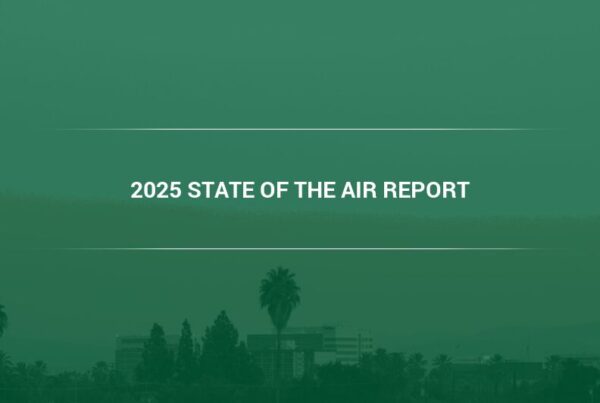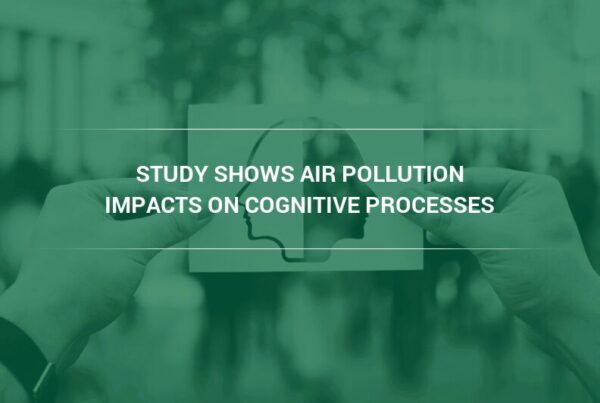The known health effects of air pollution are vast, with various types of pollution causing damage to just about every part of the human body. While most people are aware of long- and short-term effects of air pollution on the respiratory system (which can include respiratory irritation in the short term and higher risk for developing respiratory infections and diseases in the long term), you might not know that chronic exposure to air pollution may be causing you to put on weight or be preventing you from losing it.

Existing research has established a correlation between higher levels of pollution and higher BMI amongst local residents. A recent long-term study has uncovered a link between ambient air pollution and weight gain. Specifically, the presence of particulate matter in the air is linked to a significant increase in weight over time.
In this article, clean air experts from Camfil, a global leader in the research, engineering, and manufacturing of premium air filtration technology, explain the findings of the new study.
Related article: EPA — Indoor Air Pollution One of Human’s Greatest Risks and Proper Air Filter Selection is a Vital First Step
What is Particulate Matter?
To fully understand the methodology, findings, and implications of this study, it is important to understand what particulate matter is. Particulate matter is one of two main categories of air pollution (the other being gaseous, or molecular, pollution).
Particulate matter is defined as any solid or liquid particles suspended in the air. The composition of particulate matter can vary greatly. The particulate matter in the air often includes everyday pollutants and allergens such as pet dander, pollen, and dust, but can also include black carbon and other more harmful pollutants.
Particulate matter, which is also known as particle pollution, is further categorized by the diameter of particles. The three types of particulate matter are:
- PM10 — defined as anything less than ten microns in diameter.
- PM2.5 — defined as anything less than 2.5 microns in diameter.
- PM1 — defined as anything less than one micron in diameter.
A micron, or micrometer, is one-thousandth of a millimeter. To put into perspective just how small particulate matter is, it helps to know that the average human hair is approximately 70 microns in diameter.
Related article: Air Pollution aAnd COVID-19 — Study Shows Exposure to Air Pollution Increases Risk of Getting Sick with COVID-19
Does Air Pollution Cause Weight Gain?
The study was published in 2021 in Environmental Health Perspectives, a peer-reviewed, open-access journal that is published monthly with support from the U.S. National Institute of Environmental Health Sciences. Researchers noted evidence in the existing body of research that suggested that particulate matter was obesogenic (something that tends to cause obesity) in children and adolescents. In this study, they aimed to test whether or not the same effects were present in adults.
For this study, researchers examined a group of United States Veterans from 2010 through 2018, with the sample totaling 3,902,440 veterans. Participants were selected through the Department of Veterans Affairs (VA) database and were included if they had at least one weight measurement on record in the year-long period spanning between July 1, 2010, and June 30, 2011. Accompanying height measurements were used to calculate BMI.
To calculate fine particulate matter (PM2.5) exposure, researchers used satellite remote sensing, chemical transport modeling, and ground-based PM2.5 measurement data from the Environmental Protection Agency (EPA). Residential addresses for each participant were updated every quarter to maintain the most accurate estimate of pollution exposure possible.
The researchers also accounted for individual factors that may interfere with results in their data analysis process, including state of residence, age, race, sex, marital status, and smoking status, as well as factors related to poverty such as diet, population density, exercise access, excessive alcohol use, and rurality.
The data showed that exposure to higher levels of particulate matter is linked to increased risk of weight gain and obesity, as well as increases in weight on the individual level. These findings were consistent amongst multiple sensitivity analyses, which accounted for alternate exposure and outcome definitions, as well as multiple covariate factors.
Preventing Particulate Matter Exposure with Air Filtration
While exposure to outdoor air pollution is difficult to control, Americans spend more than 90% of their time indoors, where indoor air quality can be up to fifty times worse than outdoor air quality. It is therefore essential to limit exposure to indoor air pollution as much as possible to optimize health outcomes.
Camfil offers a variety of air filtration solutions designed and engineered to protect human lungs from harmful pollutants.
Check out the 30/30 Dual 9 panel filter, which captures particulate matter out of the airstream passing through an HVAC system. The Dual 9 is the longest-lasting panel filter available on the market, providing protection against particulate matter for up to twelve months.
Alternatively, consider the City M air purifier. As a standalone unit, the City M operates independently of the building’s HVAC system and requires no special installation or equipment to use. In fact, all you need to get started is a standard power outlet. By using actual HEPA air filters and an activated carbon filter, the City M targets both particulate matter and gaseous pollutants, all the while running quietly in the background.
To learn about more air filtration solutions and to figure out which is ideally suited for your situation, contact your local Camfil air filtration expert.
About Camfil Clean Air Solutions
For more than half a century, Camfil has been helping people breathe cleaner air. As a leading manufacturer of premium clean air solutions, we provide commercial and industrial systems for air filtration and air pollution control that improve worker and equipment productivity, minimize energy use, and benefit human health and the environment. We firmly believe that the best solutions for our customers are the best solutions for our planet, too. That’s why every step of the way – from design to delivery and across the product life cycle – we consider the impact of what we do on people and on the world around us. Through a fresh approach to problem-solving, innovative design, precise process control, and a strong customer focus we aim to conserve more, use less and find better ways – so we can all breathe easier.
The Camfil Group is headquartered in Stockholm, Sweden, and has 33 manufacturing sites, six R&D centers, local sales offices in 30 countries, and about 4,800 employees and growing. We proudly serve and support customers in a wide variety of industries and in communities across the world. To discover how Camfil USA can help you to protect people, processes and the environment, visit us at www.camfil.us/
##
Media Contact:
Lynne Laake
Camfil USA Air Filters
T: 888.599.6620
E: Lynne.Laake@camfil.com
F: Friend Camfil USA on Facebook
T: Follow Camfil USA on Twitter
Y: Watch Camfil Videos on YouTube
L: Follow our LinkedIn Page
Sources:
https://www.sciencedaily.com/releases/2020/03/200312101033.htm
https://ehp.niehs.nih.gov/doi/10.1289/EHP7944
https://www.sciencedirect.com/science/article/abs/pii/S0013935121009051?via%3Dihub



